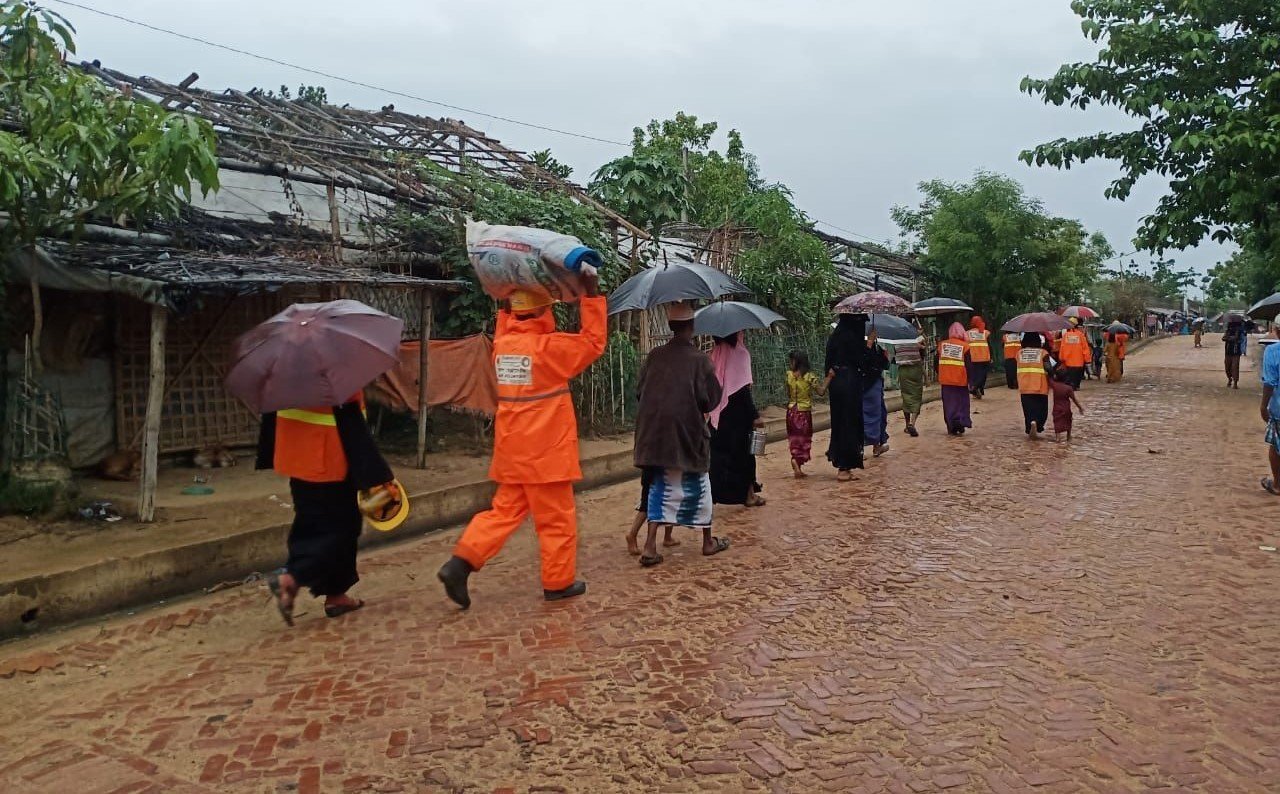Super cyclone Mocha made landfall along the Myanmar-Bangladesh coasts on Sunday after intensifying into the equivalent of a category-five storm, causing extensive damage to the southeastern coastlines and forcing the evacuation of over five lakh people in low lying areas.
The Cyclone Mocha, one of the most powerful cyclones seen in the country in nearly two decades – made landfall shortly after midday on the Teknaf shorelines before making its way through the Naf River that divides Bangladesh and Myanmar.
The powerful wind uprooted trees and damaged roofs of several houses in Teknaf and Saint Martin’s Island, which is situated about 9-km south of the tip of Cox’s Bazar-Teknaf peninsula. There was heavy rain along with strong winds in St. Martin’s, an eight-square-kilometre coral-rich island located in the Bay of Bengal.
“The ‘eye’ or the centre point of the cyclone made its landfall shortly after midday today on the Teknaf shorelines, coming through the Naf River, ahead of its anticipated time,” Bangladesh Met office spokesman AKM Nazmul Huda told PTI.
He said the tail or the rest of the severe storm, which was categorised as a very dangerous category-five cyclone, might take more time to cross the coastlines.
Citing sources, the Dhaka Tribune newspaper reported that St Martin’s Island, Teknaf Sadar and several other coastal areas have been affected by strong winds which uprooted trees, and blown away roofs of houses.
Administrative chief of Teknaf sub-district of Cox’s Bazar Mohammad Quamruzzaman said the wind was blowing at a speed of over 200 kilometres per hour in Taknaf and its southernmost part Shahpori Dip along the Bay of Bengal.
Teknaf is close to Myanmar and separated from northern Myanmar coasts by the Naf River.
Quamruzzaman said that extensive damage has been reported in Teknaf and Saint Martin’s Island due to the cyclone.
“We have received news of several people being injured in these two areas,” he added.
Community members as first reponders.
Various organizations & agencies collectively train and equip camp volunteers to quickly respond in these kind of situations.
@BDRCS1 #CPP@ifrc @IFRCAsiaPacific @StatePRM @UNHCR_BGD @IOMBangladesh @UNDP_BD pic.twitter.com/F7WtHVhiAv
— Resty Lou Talamayan (@resty_lou) May 14, 2023
The weather officials said the Naf River was witnessing high tides that began at 11 am and would continue until evening.
Mujibur Rahman, the Chairman of Saint Martin’s Island, said many houses on the island were blown away by the strong wind. “I have heard news of several people being injured,” he was quoted as saying by the newspaper.
Storm surges of up to four meters could swamp villages in low-lying areas. There are fears it may hit the world’s largest refugee camp, Cox’s Bazar, where over one million displaced Muslim Rohingya refugees live in makeshift camps.
Earlier, the Bangladesh Met Office issued the highest danger signal 10 for Cox’s Bazar.
Cyclone Mocha started hitting the coastlines of Bangladesh and Myanmar on Sunday after intensifying into the equivalent of a category-five storm. The powerful cyclone brought heavy rain and winds of up to 195 kph.
The forecast was it will make landfall with heavy rains and winds on Sunday afternoon. The low-lying areas of Cox’s Bazar and Chattogram are likely to be inundated by wind-driven tidal surges eight to 12 feet above normal.
Tidal surges of five to seven feet above normal are also likely to deluge low-lying parts of Feni, Noakhali, Laxmpur, Chandpur, and Bhola, bdnews24.com reported.
Meteorologists previously warned Mocha could be the most powerful storm seen in Bangladesh in nearly two decades.
Download Nagaland Tribune app on Google Play

Authorities on Saturday launched a massive evacuation campaign to relocate close to half a million people along the southeastern coastlines.
Bangladesh has shut down nearby airports, ordered fishermen to suspend their work and set up 1,500 shelters as people from vulnerable areas were moved to safer spots.
Officials said the government, with the support of UN agencies and aid workers, has kept tonnes of dry food and dozens of ambulances ready with mobile medical teams in sprawling camps of the Rohingyas who fled to Bangladesh from Myanmar.
Residents and officials fear the Mocha-triggered tidal surges could cause massive deluges and landslides, endangering the lives of those residing in hillside camps, where mudslides hit regularly.
The World Meteorological Organisation, a United Nations agency, had warned the super cyclone will cause heavy rain, flooding, and landslides around the coasts of Bangladesh and Myanmar.
“Cyclone ‘Mocha’ is coming. We have kept the cyclone centres and taken all types of preparations to tackle it,” Prime Minister Sheikh Hasina earlier said.
Bangladeshi authorities have set up 55 shelters at Bhasan Char offshore island, where nearly 30,000 of the Rohingya refugees have been relocated from the mainland.
Bangladesh exclusively dedicated the Bhasan Char to the Rohingyas though most of them live in the mainland of Cox’s Bazar adjacent to Myanmar borders. Most of them fled to neighbouring Bangladesh after a military-led crackdown in Myanmar in 2017.
Prime Minister Hasina earlier warned that the cyclone could disrupt electricity and gas supplies and particularly cause water stagnation in coastal areas.
“This cyclone (Mocha) is the most powerful storm since Cyclone Sidr of 2007,” chief meteorologist Azizur Rahman said.
Cyclone Sidr hit Bangladesh’s southwestern coast killing more than 3,000 people and inflicting damages to the tune of billions of dollars.

